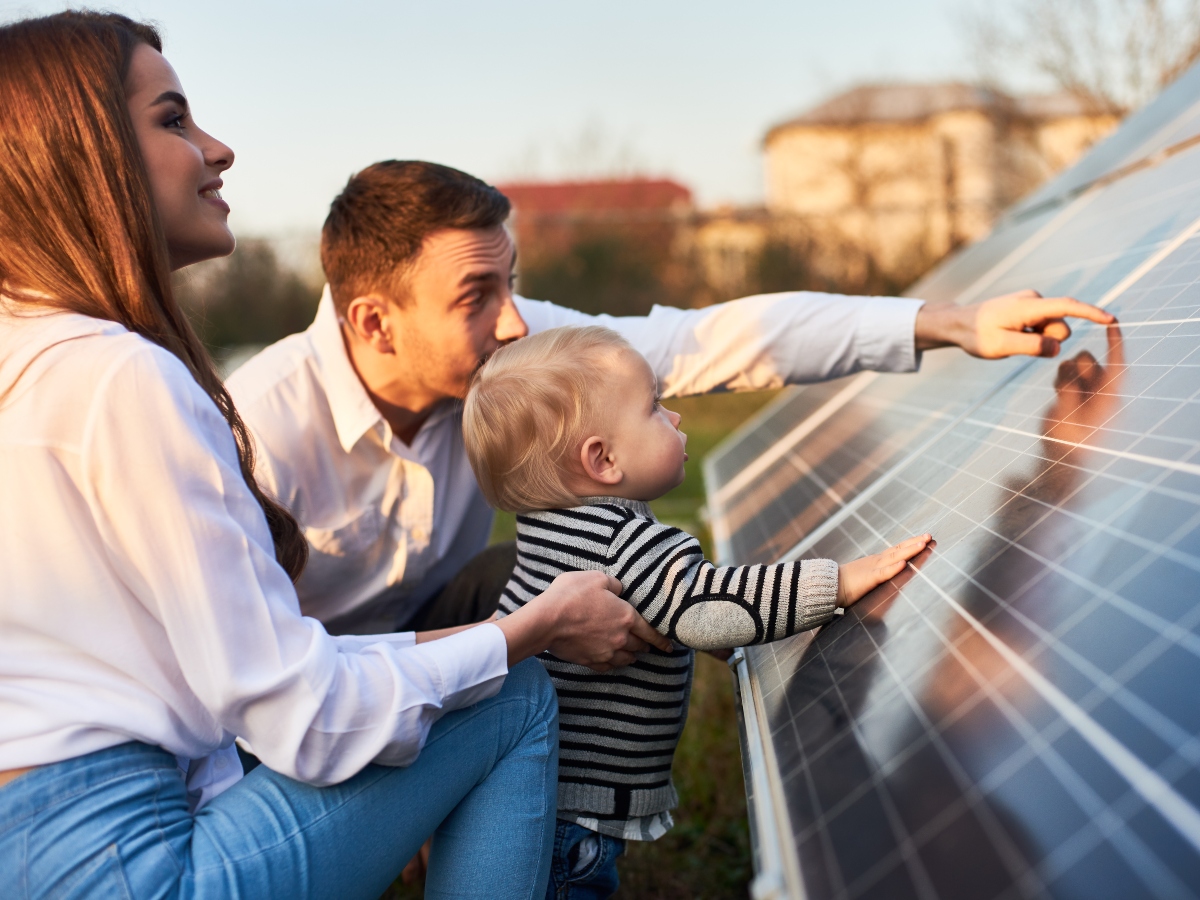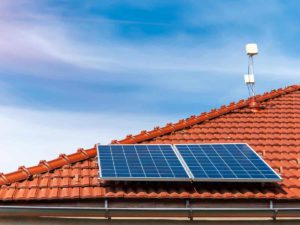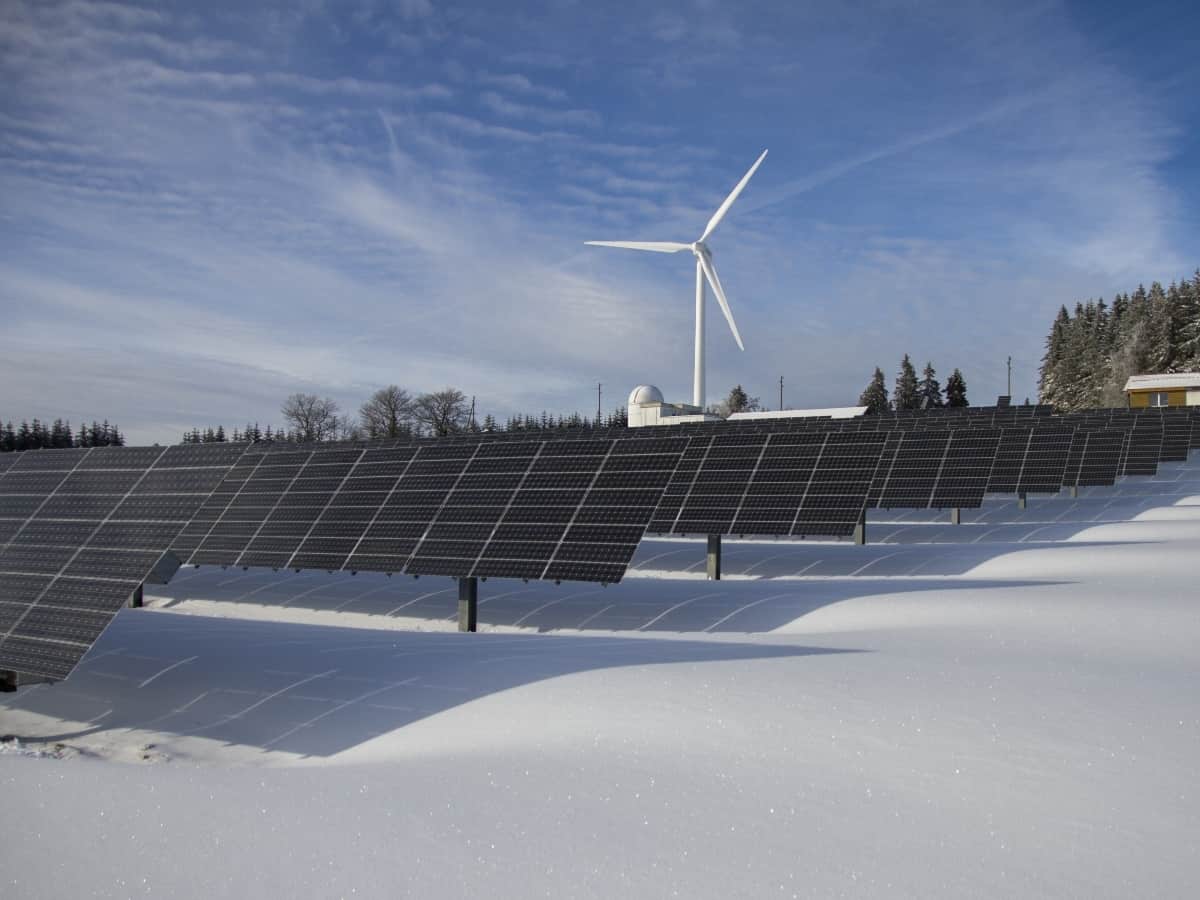A solar tracking system can increase the amount of energy you get from your solar panels by as much as 25 percent. It produces more energy in a smaller space. If you have a flat roof, a solar panel is ideal for optimizing the use of your roof for solar panels.
If you have your own solar power “farm” in a sunny location, it can increase the power you get from your panels. And your solar tracking system can give you the same amount of energy from sunup to sundown instead of fluctuating energy throughout the day.
What is a Solar Tracking System?
A solar tracking panel is the next generation of technology for solar panels. Most of us are familiar with stationary mounts. These mounts hold solar panels in a fixed position. They only catch perpendicular rays of the sun a small part of the day.
Solar tracking panels automatically move to track the movement of the sun across the sky so they are always directly facing the sun. This maximizes output.
Discover Energy Audits with Solar Energy and ONIT Home
Try our Free Energy Audit to make sure your home is performing at optimum energy efficiency. We’ll inspect every nook and cranny of your home to make sure it’s best serving your needs. We’ll also give you tips on lowering your energy bills, conserving energy, and creating a more efficient space. To learn more about how we can help you maintain a top performing home, visit us online to get started!
How Do Solar Tracking Panels Work?
We all know that the sun rises in the east and sets in the west. A solar panel on the east side of your roof catches more sunlight in the morning. A solar panel on the west side of your roof catches more sunlight in the evening.
But we also all know that the sun changes its height in the sky every day. On the first day of summer, the sun is as high in the sky as it will get all year. This is also the longest day of the year. No matter where you place your panel, it won’t generate any more power than it does at the summer solstice.
Six months later, though, the sun is as low in the sky as it gets all year. A stationary solar panel, if you positioned it to maximize power generation in the summer, catches oblique, weaker sunlight. It doesn’t generate as much power per panel as in the summer. Add to that fact, the days are shorter.
Stationary solar panels can be optimized for winter solar power production or summer power production, but not both.
Now suppose you could make your solar panel movable. It wouldn’t just move from east to west with the sun. It would also move north and south with the seasons. That’s how a solar tracking panel gives you the greatest possible energy generation all year round. Now let’s get into some not-too-technical details of how solar tracking systems work.

Solar Tracking Terminology 101
When you are shopping for solar tracking systems, one of the terms you may hear tossed around is “actuation.” This just means how the solar panel is controlled.
Solar panels can be actively, passively, or manually controlled.
Active Control
Active solar tracking systems have a motor and cylinders that change the position of the panels to keep them facing the sun. There’s more that can break down, but there aren’t as many operational problems in cold weather.
Passive Control
Passive actuation involves putting a control device in the tracker that contains a liquid with a very low boiling point. The sun’s rays are enough to evaporate it. When the solar panel isn’t getting enough sunlight to keep the controller liquid in its gaseous form, it condenses. Weight imbalance keeps the panel pointed toward the sun.
Passive solar tracking systems don’t have a lot of moving parts that need maintenance or can break down. A passive solar tracking system doesn’t need a motor.
Manually Controlled
You probably won’t be offered a manually actuated solar tracking system. You certainly don’t want one. A manually actuated solar tracking system would have to be manually adjusted throughout the day. That leaves the other top choices as active control and passive control.
Additional Information to Know
Solar trackers can also move on a horizontal axis, a vertical axis, or a dual axis. Horizontal trackers move the panel east to west to catch the sun’s rays throughout the day. They are a good choice for people who live at a relatively low latitude (in the United States, that means farther south), where the sun doesn’t move dramatically farther north or south with the seasons.
Vertical trackers move solar tracking systems north and south to catch the sun’s rays with the seasons. If you live far enough north from the equator to have really long summer days, this is a good option. But we’re talking Alaska or Canada.
There are also solar tracking systems that operate on a dual axis. If you live in the extreme north of the USA, they’re a great investment. Otherwise, not so much. It’s not important that you remember all these terms. Just be sure you don’t let someone sell you a manually controlled solar tracking system or a dual-axis solar tracking system you don’t need.

Three Reasons You May Want a Solar Tracker Instead of a Fixed Solar Panel
There are three strong reasons the best solar system for you may be a solar tracking system instead of a fixed solar panel.
- More energy production. Depending on the time of day and the time of year, a solar tracking system may generate 10 to 25 percent more energy than a fixed solar panel.
- A bigger reduction in your power bill. You’re probably aware that the power company has to buy your excess solar energy power production. You may not be aware that they pay more for the power they receive at different times of day. You get a bigger reduction for every kilowatt of energy your solar panels produce in the morning and in the evening than in the middle of the day.
- Added sales value for your house. Online real estate site Zillow reports that houses that have solar panels sell for 4.1% more than comparable houses that don’t have solar panels. That’s $12,600 on a $300,000 home. That’s more than $20,000 on a $500,000 home. Your realtor can get an even higher premium when you sell your house if you have solar tracking systems.
When you install a solar system with solar tracking systems, you of course get all the other benefits of solar. In some locations, a solar tracking system will be more resistant to storm damage. You have even more power for those inevitable times the power will be out for everybody else. Also, you have a system that maximizes solar power production in the winter. You get immediate financial benefits from installing solar power. You get all the tax benefits for installing solar, and it’s just as easy to finance.
Is There Any Potential Downside to Owning a Solar Tracking System?
Negatives to Solar Tracking System
We’ll be upfront about the potential problems with a solar tracking system.
- It’s true that a solar tracking system costs more to install than conventional flat panels. Depending on the size of your project, it usually costs 8 to 10 cents a watt more to go with a solar tracking system.
- You probably won’t place a solar tracking system on your roof, although they can be installed on a flat roof. The panels have to be installed just a few inches above your roof, unlike the six feet or more that can be installed above the ground. Or, if you go with an on-the-ground installation for your solar panel system, you will need site preparation, trenching, and cables.
- Trackers are more complex than fixed panels. The latest solar tracking systems are very reliable, but there is still more maintenance involved than with fixed solar panels.
- If your house is built on a lot with a slope, it may not be possible to put in a solar tracking system without grading a flat area in your yard. East-to-west slopes are easier to work with than north-to-south slopes.
- Solar tracking systems don’t work very well when they are covered with snow.
Benefits to Solar Tracking System
However, we believe the pros far outweigh the cons!
- Advances in engineering have made maintenance for your solar tracking system easy. ONIT can provide exactly the hassle-free solar tracking system that will work best for you.
- When you have a contractor that understands how weather, latitude, installation size, and your personal power requirements affect the choice of solar tracking system, you can get the unique single-axis or double-axis solar tracking system you need.
- Solar tracking systems make better use of land than fixed-tilt systems.
- And, as we mentioned before, you will consistently get 10 to 25 percent more energy production from your solar tracking system than from fixed-tilt panels.
Solar tracking is a great investment when you have a contractor you can trust. And there is an easy way to find a solar tracking contractor you can trust.

ONIT Home Offers Two Week Installations
ONIT Home Service offers dependable, affordable solar tracking and solar panel installation you can rely on. To find out how you can take advantage of our two week installation deal, visit us online or give us a call today at 1-833-433-0331. We look forward to helping you minimize your utility bill and step in 2022 with renewable energy!



